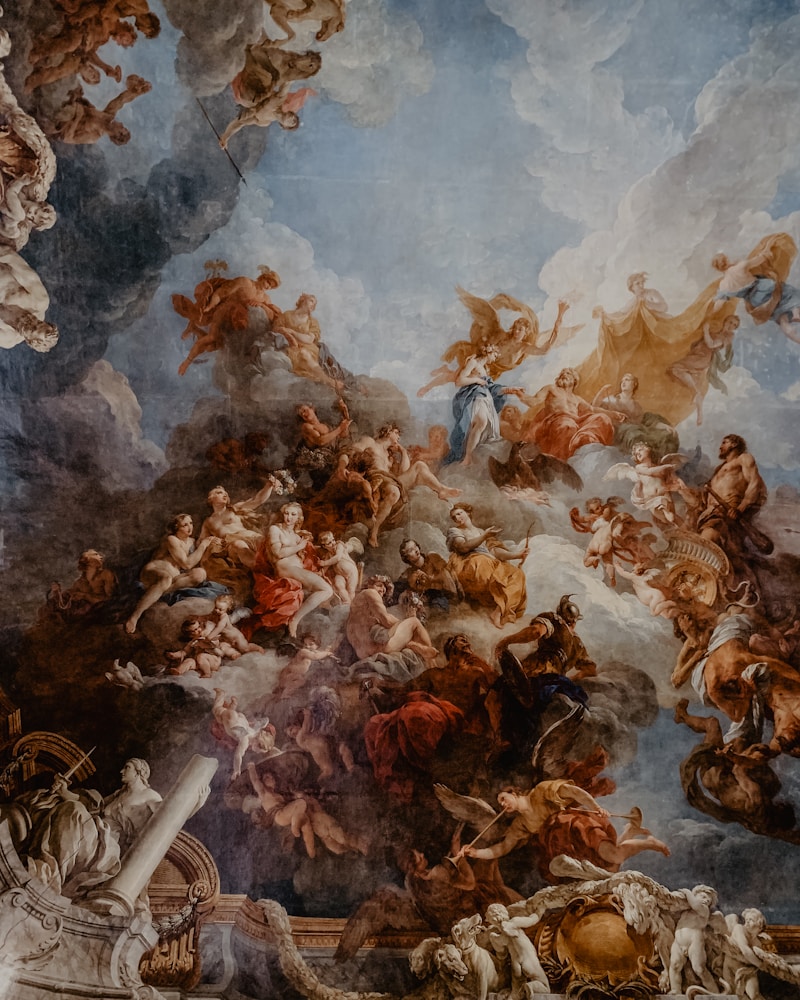Exploring Celestial Themes and Skies in Art and Nature
Introduction to Celestial Themes and Skies
The universe has long fascinated humanity, inspiring countless artistic interpretations and igniting our imaginations. Celestial themes, representing various aspects of the skies, stars, and cosmic wonders, have found a prominent place in both art and nature. This article delves into celestial themes and skies, exploring their significance in various cultures, their prominence in art, and their impact on our understanding of the universe.
The Cultural Significance of Celestial Themes
Throughout history, different cultures have interpreted the cosmos in unique ways. Celestial themes often reflect a society's beliefs, fears, and aspirations. The stars and skies became symbols of guidance, divinity, and the unknown.
1. Ancient Civilizations and the Cosmos
In ancient Egypt, the stars were seen as the souls of the dead, and the Night Sky was a canvas for their home in the afterlife. Temples were constructed to align with celestial events, showcasing the relationship between the architectures and astronomical phenomena. Similarly, the Mayans tracked celestial events meticulously, utilizing them to inform agricultural practices and predict celestial occurrences.
2. Celestial Themes in Literature and Mythology
Mythology often intertwines celestial themes with human stories. For example, in Greek mythology, Pleiades, the Seven Sisters, and Orion are well-known constellations that narrate tales of love, loss, and adventure. Such narratives encapsulate the human experience, depicting how celestial themes transcend time and space.
Celestial Themes in Art
The fascination with celestial themes extends profoundly into the realm of art. Artists have used various mediums to capture the ethereal beauty of the skies.
1. Romanticism and the Sky
During the Romantic period, skies became a central motif in artworks, symbolizing freedom, vastness, and the journey of the soul. Artists like Caspar David Friedrich portrayed sweeping landscapes where the sky played a pivotal role, evoking deep emotional responses.
2. Impressionism and the Changing Sky
Impressionist artists such as Claude Monet focused on light and color, depicting the ephemeral qualities of the sky. His series on haystacks and the Rouen Cathedral shows how the time of day changes the appearance of subjects, highlighting the transient nature of celestial themes. The sky becomes a dynamic character, engaging the viewer's emotions.
3. Modern Interpretations of Celestial Themes
Contemporary artists continue exploring celestial themes, using technology and modern materials. Artists like Olafur Eliasson create installations that mimic celestial events, offering immersive experiences for viewers.  serves as an inspiration for how we not only see the skies but feel them.
serves as an inspiration for how we not only see the skies but feel them.
| Art Movement | Notable Artists | Celestial Themes |
| Romanticism | Caspar David Friedrich | Emotional landscapes |
| Impressionism | Claude Monet | Light and color |
| Modern Art | Olafur Eliasson | Interactive installations |
The Connection of Celestial Themes and Nature
The skies also directly relate to nature. Celestial phenomena, such as sunrise, sunset, lunar phases, and meteor showers, impact not only our environment but also our psychological state. The interplay of light and shadow in the sky changes throughout the day, influencing how we perceive our surroundings.
1. Sunrises and Sunsets
Sunrises signal new beginnings, while sunsets often provide a sense of closure. The brilliant colors seen during these transitions can inspire awe and reflection. Artists often strive to capture these moments, as they symbolize the duality of life—hope and melancholy.
2. The Moon and Tides
The moon significantly influences Earth's tides and has been a source of inspiration for countless stories and artworks. Its phases have been depicted in art ranging from Van Gogh’s "Starry Night" to modern photography, showcasing how celestial bodies directly affect life on Earth.
3. Meteor Showers and Celestial Events
Events like meteor showers captivate audiences globally. They remind us of the vastness of the universe, providing a sense of wonder and mystery. People often gather to watch these natural events, sharing in a collective experience that ties humans back to the cosmos.
Celestial Themes in Science
Celestial themes also spawn scientific inquiry. Astronomy and astrophysics strive to uncover the mysteries bounded within the stars and cosmic structures. The relationship between celestial themes and the scientific community is crucial for understanding our universe.
1. The Importance of Astronomy
Astronomy allows us to study celestial bodies, their movements, and their interactions. The knowledge gained from this scientific pursuit not only enhances our understanding of the cosmos but also informs essential aspects of our existence, such as navigation and timekeeping.
2. The Influence of Space Exploration
Recent advancements in space exploration rejuvenate public interest in celestial themes. Missions like the Hubble Space Telescope have unveiled infinite wonders, reigniting humanity's desire to explore and understand the universe. These discoveries inspire new generations of artists, writers, and thinkers, shaping future interpretations of celestial themes in multiple forms.
Conclusion: Embracing Celestial Themes and Skies
The enchantment of celestial themes and skies continues to inspire and influence various facets of human creativity and understanding. As we marvel at the beauty of the universe, we are reminded of our place within it. From cultural interpretations and artistic endeavors to scientific exploration, the skies invite us to dream, question, and create. Embracing celestial themes allows us to connect more profoundly with our world and the wonders beyond. In contemplating the heavens, we are reminded to appreciate the breathtaking beauty that surrounds us and the stories yet to be told.
In conclusion, whether you are an artist, a scientist, or a dreamer, celestial themes and skies are ever-present in our lives. They inspire us to look up, explore the unknown, and ponder the infinite possibilities that lie beyond our planet. So next time you gaze at the stars, remember the rich tapestry of stories, art, and science that they weave into our beings.